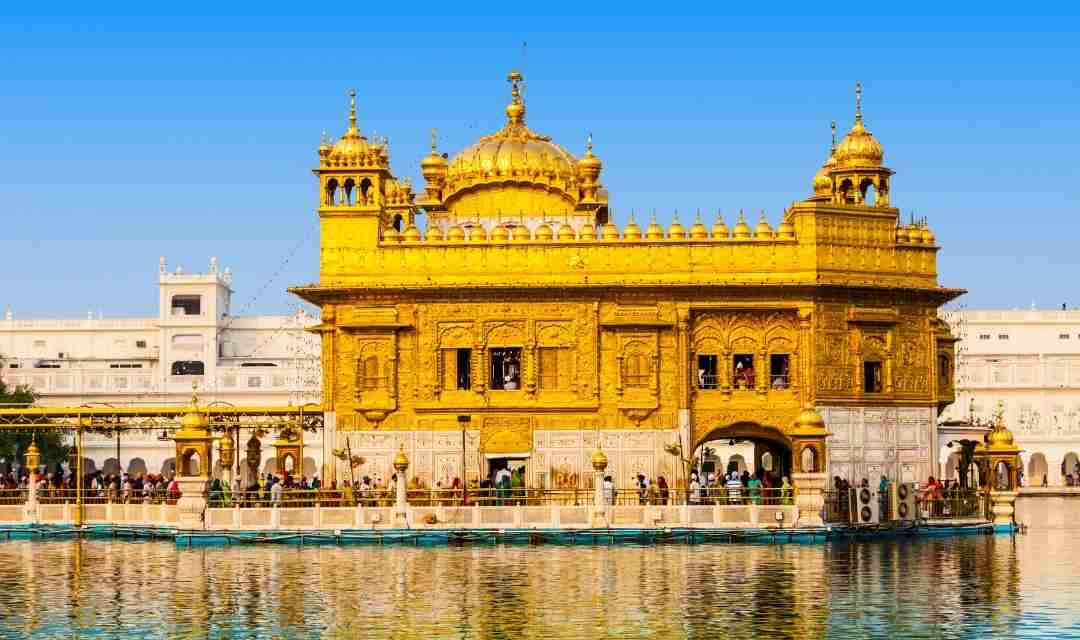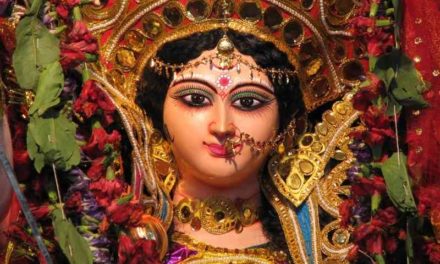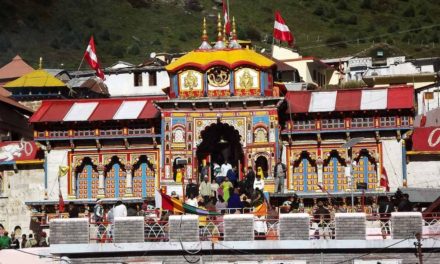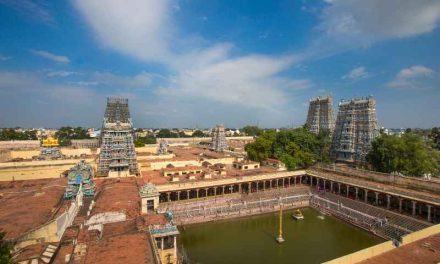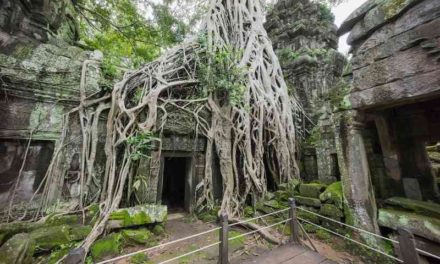The Golden Temple, also known as Sri Harmandir Sahib, is one of the most spiritual locations in India. It is the holiest temple in all of Sikhism. The temple, located in the center of Amritsar and readily accessible from all parts of the city, attracts a huge number of tourists and worshippers each day. Why you should visit the golden temple, Amritsar? There are many reasons as to why you should, let us review the temple.
With its beautiful golden architecture and daily Langar (community kitchen). The Golden temple located in Amritsar welcomes followers of all religions and provides free meals to over 100,000 individuals from all walks of life. This is the Sikh faith’s holiest temple. The Sikhs’ sacred book, the Granth Sahib, is kept within the temple throughout the day.
The Sri Harmandir Sahib, also known as the Golden Temple, is one of Amritsar’s most popular attractions and spiritual center. In the 1500s, Guru Ramdas Sahib, the fourth of ten Sikh gurus, built the temple and its pool as a universal site of devotion.
Numerous renovations have been made to the temple, including the addition of marble inlays throughout the floor. The temple’s top floors were coated with 750 kilograms of pure gold by Maharaja Ranjit Singh, founder of the Sikh Empire of India (1799-1849).
The devout access the temple’s golden heart through a causeway or bridge that spans the surrounding pool. Sikhs may bathe in the water from the outside platform since it is considered cleansing. Observe temple employees carrying buckets of water to worshipers around the pathways.
It is customary for devotees to take a dip in the sacred lake of the Golden Temple. All guests must enter barefoot and must wash their feet in a separate foot-washing pool. Temple employees deliver water from the temple’s surrounding pool. Visitors carry bottles of the water home for cleansing and wellness.
In addition to peace, humility, and equality, Sikhism is committed to social justice and equality. The unique turban, unshorn hair, wooden comb, iron bracelet, and ceremonial sword are worn by initiates as emblems of these ideals. All guests, rich or impoverished, are invited to a complimentary lunch in the temple kitchen.
Visitors are seated on an equal footing on the floor. Each Sikh gurdwara is equipped with a free kitchen, and Harmandir Sahib is one of the biggest, feeding more than 100,000 people daily. Gurudwaras offer vegetarian cuisine to accommodate vegetarians.
This shrine, which is adorned with gold, houses the Sikh text, the Guru Granth Sahib (Guru Granth Sahib). Sikhs regard this sacred text as the “ultimate guru,” and it is read throughout rituals. Sukhasan, or “rest,” is given to the scripture in the evening, and in the morning, it is returned to the sanctuary and opened to a random page, which serves as the foundation for the day’s prayers.
In the context of a bigger temple complex, Harmandir Sahib is a little structure inside a larger one. Another significant structure is the white-marble Akal Takht, which serves as the primary administrative, political, and legal center for Sikhs today. The religion’s leader, or Jadethar, is the most senior of five Sikh leaders worldwide.
The colossal temple complex is really magnificent in scale.
As a sign of respect, visitors must cover their heads and remove their footwear before entering the Golden Temple. While listening to the lovely notes of gurbani (spiritual music), the temple’s peaceful spirituality comforts the soul. Additionally, anybody, regardless of caste, religion, or gender, is welcome to participate in the free lunch served here daily to about 20,000 people at the Guru Ka Langar (community supper). The whole procedure is run entirely by volunteers, making it one of the most humbling experiences possible.
The temple’s architecture is magnificent, with a 67-foot square of marble forming the structure’s foundation. The gleaming temple is flanked by Amrit Sarovar (nectar pool), the waters of which are believed to have curative properties. Additionally, one may see colorful fish swimming in the lake’s beautiful blue waters while devotees take a bath. The temple was built in accordance with Sikhism’s fundamental principles, which promote global brotherhood and an all-inclusive attitude. As a result, it is accessible from every direction.
In addition to the Central Sikh Museum, the main entrance is dominated by an enormous clock tower. One may get magnificent vistas of the shrine and its graceful silhouette in the Amrit Sarovar from here. A second entrance is through the silver doors of the exquisitely decorated Darshani Deori, which leads to the causeway that connects the sanctum sanctorum to the Parikrama, the marbled surface that surrounds the sarovar.
The Jubi tree, which is said to possess unique abilities, is located in the complex’s northwestern corner. It is believed to have been planted 450 years ago by Baba Buddha, the Golden Temple’s first high priest.
The Sikhs’ sacred book, the Granth Sahib, is kept within the temple throughout the day. At night, it is transported to the Akal Takth, or Eternal Throne, which contains historic Sikh warrior weapons. Other notable temples surround Sri Harmandir Sahib, including the Durgiana Temple, a magnificent garden, and Baba Atal’s tower. The sage Valmiki is believed to have penned the epic Ramayana at this holy location.
The Grand Temple, which houses the shrine, is just a portion of the enormous complex known to Sikhs as Harmandir Sahib or Darbar Sahib. The tank, the Amrit Sarovar, which surrounds the gleaming center shrine, serves as the spiritual focal point. Additional shrines and monuments are located around the perimeter of the compound.
The Sikh Museum is situated within the main entrance clock tower and depicts the persecution suffered by Sikhs at the hands of the Mughals, the British, and the 1984 Indian Government. The Ramgarhia Bunga is a defensive fortification situated at the tank’s southeast end and is flanked by two minarets. Golden Temple is without a doubt one of the world’s most magnificent sights.
Vaisakhi, which occurs in the second week of April, is one of the most significant festivals celebrated at the Golden Temple (mostly the 13th April). This event commemorates the Khalsa’s foundation.
Other religiously significant festivals include the birthday of Sikh founder Guru Nanak, the birth anniversary of Guru Ram Das, and Guru Teg Bahadur’s martyrdom day. On Diwali, the Harmandir Sahib is lavishly lit with lights and diyas, as well as a fireworks show. Most Sikhs visit the temple at least once in their lives.
Every morning, the Guru Granth Sahib is brought inside the temple grounds and restored to the Akal Takhat (timeless throne), the Khalsa brotherhood’s temporal seat. This ritual, known as the Palki Sahib, allows male guests to take part in the adoration of this sacred book.
A hefty palanquin is used to transport the Guru Granth Sahib. Male guests form a line in front and behind the palanquin, shouldering the load briefly before passing it on. This provides an opportunity for everyone to engage and relax.
If you visit this enigmatical artwork, be sure to offer and sample the delectable Prasad. Additionally, the temple boasts the world’s biggest kitchen, which serves free langar meals to people of all sects and beliefs.
Guru-Ka-Langar is a colossal eating hall situated at the southeast end of the temple complex. It is believed that between 60,000 and 80,000 pilgrims gather here daily to dine after worshipping at the Golden Temple. While the meal is provided free of charge, pilgrims often give contributions and provide assistance with the mammoth mound of dishes to be cleaned.
It is a humble manifestation of the Sikh hospitality philosophy, catering to everyone from paupers to billionaires. The cuisine provided here is vegetarian to ensure that everyone has an equal opportunity to eat. This location is often referred to as the World’s Largest Free Kitchen.
- Before entering the temple complex, remove your shoes and socks (there is sandal stand at the entrance). Wash your feet in the adjacent small foot tubs.
- Be properly attired. The whole body must be covered, and the head must be covered as a show of respect at the gurudwara. Scarves can be borrowed for free or purchased for INR 10 from hawkers selling souvenir scarves. Carrying a scarf, on the other hand, is sensible.
- Tobacco and alcoholic beverages are absolutely forbidden.
- If you wish to sit next to the tank, cross your legs and avoid dipping your feet in the water.
- Photography is permitted adjacent to the walkway that surrounds the tank but not inside the Golden Temple.
As a sign of reverence, sit on the ground in the Darbar Sahib while listening to Gurbani.
Halls of Akal Takht and Teja Singh Samundri: Akal Takht, which translates as “The throne of the Eternal (God),” is located directly in front of the main sanctum. After being established by Guru Hargobind’s father Guru Arjan, the site became renowned for its ceremonial, spiritual, and secular activities.
While the Akal Takht inside the Golden Temple complex serves as the main seat and supreme authority of Sikhism, the religion also has four other Takhts located at Anandpur, Patna, Nanded, and Talwandi Sabo, all of which are important pilgrimage sites for Sikhism.
While the original architecture of the temple did not include a clock tower, the Clock Tower constructed by the British may be considered to be in the place of the “lost palace”. During the Second Anglo-Sikh War, the British destroyed a portion of the structure and replaced it with a clock tower.
The Clock Tower, designed by John Gordon, was constructed in 1874 but was subsequently destroyed by Sikhs 70 years later. Although the temple now has a new entrance with a clock to the north and a museum on the first floor, it is still referred to as ghanta ghar deori.
During the construction of the Golden Temple, there were many trees surrounding the pool of the complex. The temple grounds have been expanded to include a two-story courtyard with four entrances and three Ber (jujube) trees. The first, dubbed the Ber Baba Buddha, is situated just across from the ghanta ghar deori.
Baba Buddha gave the tree its name because he sat underneath it while overseeing the building of the first temple and pool. The second tree, named the Laachi Ber, is thought to be the one under which Guru Arjan slept during the temple’s building. The third tree, Dukh Bhanjani Bher, is situated on the other side of the sanctuary, across the pool.
According to Sikh legend, a Sikh was healed of leprosy after taking a bath in the temple pool’s waters, earning the tree the moniker “suffering remover.” This tree conceals a tiny gurudwara.
In addition to the ghat ghar deoris, which have large showcases that exhibit murals of Sikh Gurus and martyrs, the Sikh museums include different paintings of the Gurus and other Sikh martyrs on the first level. The museum’s collection of swords, kartar, combs, and chakkars exemplifies Sikh history in all its splendor.
The Golden Temple’s ceremonies are conducted according to Sikh tradition, in which the text is regarded as a living being, nearly equal with and revered as a Guru.
Prakash, which translates as “light,” is the name of the opening ceremony. Each day at dawn, the Guru Granth Sahib is removed from its chamber, carried on the head, and then put and transported about on a flower-adorned palanquin.
It is then carried to the main sanctuary, where a ceremonial chanting of the Var Asa kirtans and ardas takes place, followed by the opening of a random page from the holy book. This is referred to as the day’s mukhwah, and the page is both readout and written for pilgrims to read throughout the day.
How to get there?
Local transport, such as car and cycle rickshaws, is the cheapest and most convenient form of transportation to reach the Golden Temple. Additionally, it offers car rental businesses from whom you may get a vehicle and go to the shrine. Additionally, the Golden Temple Trust provides for complimentary bus transportation from the Amritsar Railway Station.
- Amritsar’s airport, known as Raja Sansi International Airport, is located 11 kilometers from the city. Taxis are available from there to the Golden Temple.
- Rail: Amritsar and Delhi share an extensive rail network. Taxis and three-wheeled vehicles such as cycle rickshaws and e-rickshaws transport people to and from the Golden Temple.
- Traveling by car from Delhi to Amritsar is one of the finest choices, since both cities are linked by an excellent highway network.
The sukhsan (comfort or rest posture) ritual begins at night and concludes with the recitation of a succession of devotional kirtans and three-part ardas. While the devotees sing, it is borne on the head and then put and transported in the flower-decorated, pillow-bed palanquin. It is taken inside the Akal Takht and stowed away. I hope this answers the question as to Why you should visit the golden temple, Amritsar?
Another fascinating temple that you need to visit is the Badrinath Temple.
AFFILIATE DISCLOSURE: This post contains affiliate links, which means that if you click on one of the product links and make a purchase, I will receive a small commission. Which helps me support the channel to make quality content and recommend products for you.

